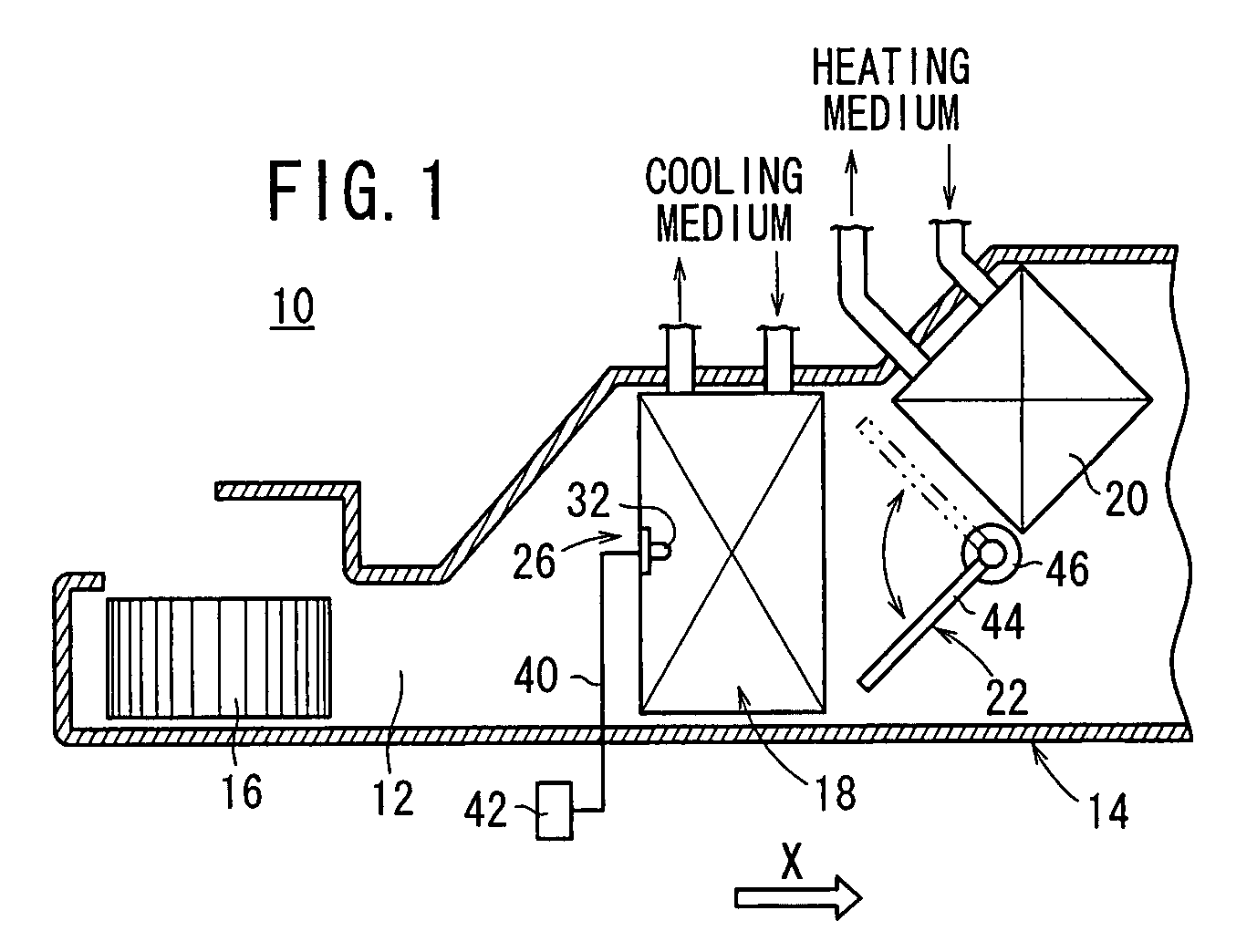Vehicle air-conditioning system
a vehicle air conditioner and air conditioning technology, applied in the field of vehicle air conditioning systems, can solve the problems of reducing the air-conditioning capability of the vehicle air-conditioning system, and achieve the effects of accurate temperature detection, reduced size, and high accuracy
- Summary
- Abstract
- Description
- Claims
- Application Information
AI Technical Summary
Benefits of technology
Problems solved by technology
Method used
Image
Examples
Embodiment Construction
[0023]As shown in FIG. 1, a vehicle air-conditioning system 10 according to an embodiment of the present invention has a duct 14 defining a passage 12 therein for discharging temperature- and humidity-regulated air into the passenger's compartment of a vehicle. The vehicle air-conditioning system 10 includes a blower 16 disposed in the duct 14 at a position upstream with respect to the direction in which air flows in the passage 12, i.e., in the direction indicated by the arrow X, and an evaporator (cooling heat exchanger) 18 disposed in the duct 14 downstream of the blower 16. A heater core (heating heat exchanger) 20 is in the duct 14 downstream of the evaporator 18. An air-mixing mechanism 22 for mixing cool air and hot air with each other is mounted in the duct 14 on an inlet side of the heater core 20.
[0024]As shown in FIG. 2, the evaporator 18 includes fins 24 in which a coolant (temperature-regulating medium) flows. The evaporator 18 evaporates the coolant by allowing heat to...
PUM
 Login to View More
Login to View More Abstract
Description
Claims
Application Information
 Login to View More
Login to View More - R&D
- Intellectual Property
- Life Sciences
- Materials
- Tech Scout
- Unparalleled Data Quality
- Higher Quality Content
- 60% Fewer Hallucinations
Browse by: Latest US Patents, China's latest patents, Technical Efficacy Thesaurus, Application Domain, Technology Topic, Popular Technical Reports.
© 2025 PatSnap. All rights reserved.Legal|Privacy policy|Modern Slavery Act Transparency Statement|Sitemap|About US| Contact US: help@patsnap.com



